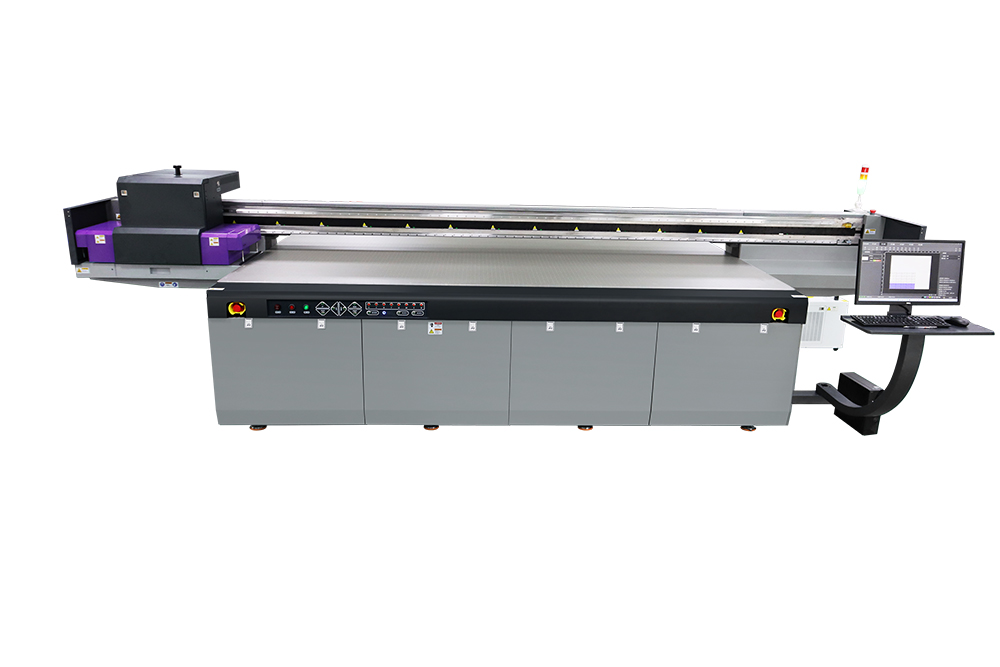UV Flatbed Printer: Tips for Improving Printing Efficiency
As technology evolves, UV flatbed printers have become a staple in industries ranging from advertising and signage to décor and personalized products. These printers offer versatility, vibrant colors, and durability, but like any tool, their efficiency depends on how well you use them. Whether you’re a small business owner, a freelance designer, or part of a larger production team, optimizing your UV flatbed printer’s performance can save time, reduce costs, and enhance output quality. This blog will walk you through actionable tips to boost efficiency without breaking the bank or compromising on results.

Understanding Your Printer’s Capabilities
Before diving into optimizations, it’s crucial to know your UV flatbed printer inside out. Familiarize yourself with its specifications—print speed, resolution, material compatibility, and ink types. Many printers come with user manuals or online guides that detail these features. For example, some models excel at high-speed production for large-format jobs, while others prioritize intricate detail for fine art prints. By aligning your workflow with your printer’s strengths, you avoid mismatched expectations and unnecessary trial-and-error.
Consider testing different materials (acrylic, wood, metal, etc.) to understand how they interact with the printer. UV ink behaves differently on glossy versus matte surfaces, and some substrates may require pre-treatment or specialized coatings for optimal adhesion. A little experimentation upfront can prevent costly reprints later.
Preparing Your Files for Success
The quality of your final print starts long before the ink hits the substrate. Proper file preparation is a non-negotiable step in efficient printing. Begin by ensuring your design files are in the correct format—typically TIFF, PDF, or high-resolution JPEGs. Avoid embedding low-quality images or vector graphics with unnecessary complexity, as these can slow down rendering.
Color management is another critical factor. Use a color profile compatible with your printer (e.g., Adobe RGB or sRGB) and calibrate your monitor to match the printer’s output. Misaligned colors lead to reprints and wasted materials. Many design software tools, like Adobe Photoshop or Illustrator, offer built-in calibration tools; take advantage of them.
Lastly, double-check your file’s resolution. While high DPI (dots per inch) is essential for sharpness, overshooting (e.g., 1200 DPI on a banner) can unnecessarily bog down processing. Aim for a balance—300–600 DPI is often sufficient for most applications.
Optimizing Print Settings for Speed and Quality
UV flatbed printers often come with adjustable settings to balance speed and quality. Fine-tuning these can dramatically improve efficiency. Start with resolution: for large-scale graphics (like billboards), lower resolution might suffice, whereas fine art or detailed packaging demands higher settings. Test a small print sample before committing to a full run.
Ink coverage is another lever. While vibrant colors are eye-catching, excessive ink can cause drying delays or smudging. Many printers offer “draft mode” options that reduce ink usage by 30–50% while maintaining legibility—perfect for prototypes or internal reviews.
Don’t overlook drying time. UV ink cures instantly under the printer’s lamps, but dense designs or thick substrates may require longer exposure. Adjusting lamp intensity or print speed can help here. For instance, a slower speed paired with higher lamp power ensures thorough curing without compromising throughput.
Streamlining Workflow with Automation
Repetitive tasks eat up time and mental energy. Automate what you can: use batch processing for similar jobs (e.g., resizing 100 business cards) or template-based design for recurring layouts. Many printers support RIP (Raster Image Processor) software that automates color correction, nesting (arranging designs to minimize material waste), and even job scheduling. If your printer lacks built-in automation, integrate third-party tools like Wasatch SoftRIP or Caldera RIP to streamline prepress workflows.
Consider implementing version control for your design files. Tools like Git (for coders) or cloud storage with version history (e.g., Google Drive) prevent overwriting critical changes and reduce errors. Automated backups of print settings and job logs also save time when troubleshooting.
Maintaining Your Printer for Peak Performance
A well-maintained printer is a reliable printer. Schedule regular cleanings of print heads, UV lamps, and material platforms. Clogged nozzles lead to streaks, while dirty lamps reduce curing efficiency—both mean reprints. Most manufacturers recommend weekly or bi-weekly checks; stick to them.
Firmware updates are another low-hanging fruit. Manufacturers often release patches to improve speed, compatibility, or security. Enable automatic updates if possible, or set calendar reminders to check manually. A small investment in maintenance pays dividends in reduced downtime and extended equipment lifespan.
Managing Materials and Consumables Strategically
Substrate choice impacts both print quality and efficiency. For example, pre-coated materials cure faster than untreated ones, reducing lamp exposure time. Test different vendors to find the best balance between cost, quality, and compatibility with your printer.
Ink management is equally critical. Store UV ink in cool, dark places to prevent premature curing. Use ink level sensors or manual tracking to avoid last-minute shortages. Some printers even pause jobs automatically when ink runs low—a feature worth enabling.
Finally, consider waste reduction. Print test patterns on scrap material or use software tools to estimate ink usage per job. Small tweaks here can lead to significant savings over time.
Scaling Efficiency: Training and Collaboration
Lastly, human factors matter. Train your team on printer basics—from loading materials to troubleshooting common errors. A 10-minute daily standup to discuss ongoing jobs can prevent miscommunications that delay projects.
Collaborate with material suppliers or fellow printers. Forums like Reddit’s r/LargeFormatPrinting or LinkedIn groups offer real-world tips from users facing similar challenges. Sharing best practices (e.g., “We found X substrate cures 20% faster with Y lamp setting”) can spark your own efficiency breakthroughs.Conclusion
Improving UV flatbed printer efficiency is a blend of technical know-how and proactive habits. By understanding your machine, optimizing settings, automating workflows, and prioritizing maintenance, you’ll print faster, cheaper, and with fewer headaches. Remember, efficiency isn’t just about speed—it’s about consistency, quality, and sustainability.
